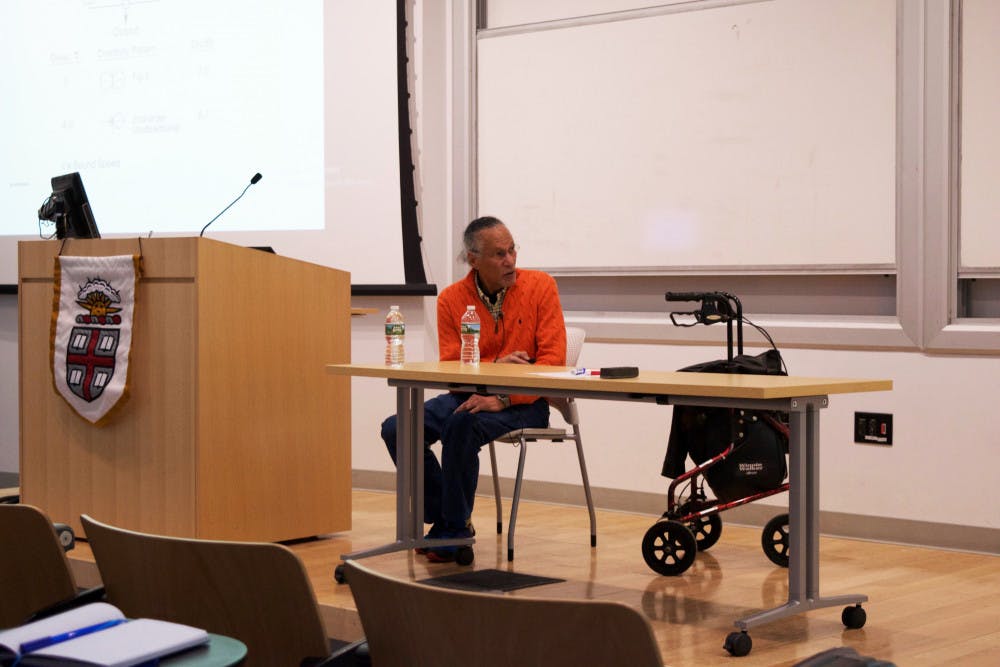“How can you create black scientists if there’s no black scientific community?” asked William Massey, professor of operations research and financial engineering at Princeton, during this week’s “Celebrating Excellence in Science” event.
Hosted by the Science Center, this two-day lecture event aimed to foster greater representation for minorities in STEM fields as part of the University’s recognition of Black History Month. Consisting of a lecture from engineer and inventor Dr. James West and a panel of scientists from research institutions across the country, the event was a continuation of the “Seeing Myself in Science” speaker series.
Director of the Science Center Gelonia Dent said in her introduction, “The idea is that we want to bring a diverse set of scientists to Brown to share their expertise and advice about diversity, inclusion and excellence.”
West, a member of the National Inventors Hall of Fame and professor of electrical and computer engineering at Johns Hopkins University, gave a lecture Tuesday on his work in acoustical science, which led to the development of technology now used in 90 percent of all contemporary microphones.
Beyond his scientific discoveries, West is perhaps equally renowned for his work in supporting minorities in science, technology and engineering. During his forty-year career at Bell Laboratories, West co-founded several programs aimed at providing mentoring and funding for underrepresented minorities studying science, including the Association of Black Laboratory Employees.
Wednesday, the Science Center hosted “How to Grow a Scientist” — a panel of scientists from top research centers across the United States — to discuss mentorship, diversity and inclusion in STEM. All of the panelists had worked at Bell Labs during their respective careers and cited the laboratory as a catalyst to their success as minorities in STEM.
The panelists included Benjamin Askew, vice president of research at SciFluor Life Sciences, LLC; Kaye Fealing, chair of the School of Public Policy at the Georgia Institute of Technology; and William Wilson, executive director of the Center for Nanoscale Systems at Harvard.
Fealing prefaced her discussion of “How to Grow a Scientist” by distancing herself from the pipeline model for including more minorities in STEM, which emphasizes early involvement in science for minorities.
“I don’t like the pipeline metaphor,” she said. “It sounds like there are no other ways of ‘getting in’ unless you get on the train early in life.” While Fealing herself had participated in a diversity-focused program like some in Bell Labs, she highlighted multiple pathways to STEM involvement.
Rather than identifying a program in which students should participate or a specific timeline for students to follow, Fealing pinpointed the broader needs for information, communication, scalability, sustainability and leadership. She cited mentorship and support from her family as instrumental to her personal success.
Likewise, Massey emphasized mentoring as key to expanding representation for minorities. “This is where it starts — bringing in the next generation,” he said.
“Everyone’s talking about pipelines, and no one’s talking about plumbing,” Massey said. “How do you connect those people who’ve gone through the pipeline?”
Instead, Massey said that scientists should focus on building community. Wilson also spoke to creating an environment where young scientists can make connections and collaborate.
Wilson said that he strives to achieve that kind of community at the Center of Nanoscale Systems, where he encourages his students to build upon a diverse and versatile array of research resources to tackle cutting-edge nanoscience research questions.
Echoing the words of William Baker, former president of Bell Labs, Wilson described his vision for his lab: “I’m going to build an ecosystem for doing science. We’re going to let people build science from within.”





